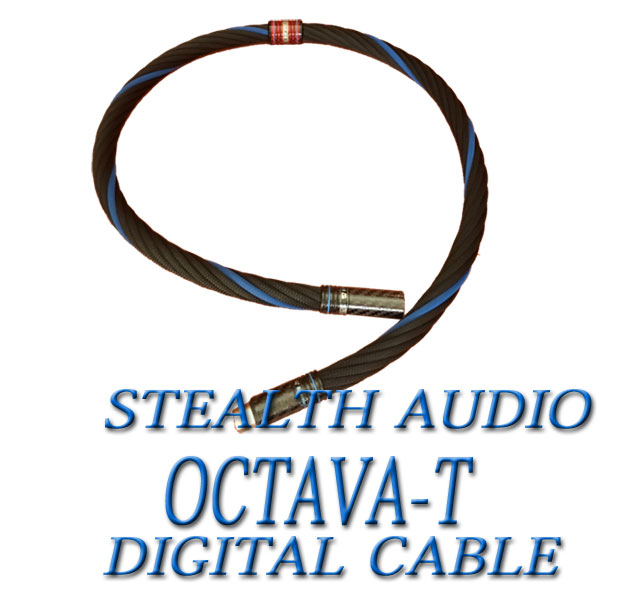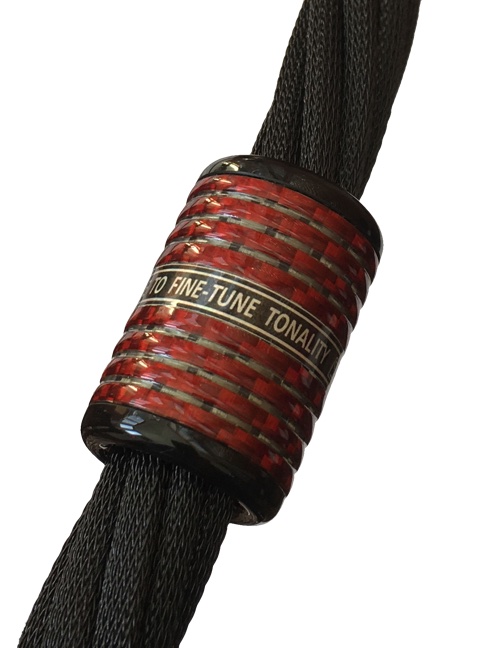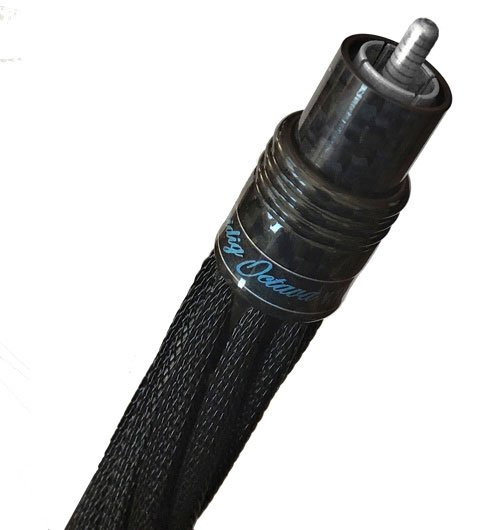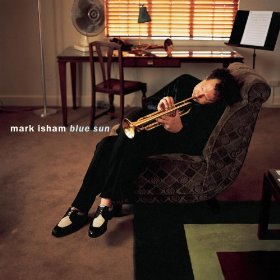Stealth Audio’s Octava-T Digital Cable

 The Spring of 2018, I was given the opportunity from Stealth Audio’s Chief Designer Serguei Timachev, to audition his newest SPDIF digital cable in the Stealth Audio Octava–T. Given their past success within the high-end audio industry, along with my personal experiences with numerous Stealth products, I felt honored. I felt this would be a very interesting project since I was already using their outstanding Stealth Varidig Sextet digital cable. Prior to receiving the Stealth Audio Octava-T, I had been swapping both the Stealth Varidig Sextet Digital V-14 and the outstanding Hemingway Creation digital cable in my system. Both digital cables are outstanding in their own right; the Hemingway Creation digital cable exhibits qualities in the lower frequencies that the Stealth Audio Sextet fall a little short, however in terms of musical presentation both cables are a step above anything on the market that I have experienced within my system.
The Spring of 2018, I was given the opportunity from Stealth Audio’s Chief Designer Serguei Timachev, to audition his newest SPDIF digital cable in the Stealth Audio Octava–T. Given their past success within the high-end audio industry, along with my personal experiences with numerous Stealth products, I felt honored. I felt this would be a very interesting project since I was already using their outstanding Stealth Varidig Sextet digital cable. Prior to receiving the Stealth Audio Octava-T, I had been swapping both the Stealth Varidig Sextet Digital V-14 and the outstanding Hemingway Creation digital cable in my system. Both digital cables are outstanding in their own right; the Hemingway Creation digital cable exhibits qualities in the lower frequencies that the Stealth Audio Sextet fall a little short, however in terms of musical presentation both cables are a step above anything on the market that I have experienced within my system.
Upon arrival and once unpackaged, I examined the new Octava-T, I was surprised at how much larger in appearance it was compared to my 1 meter Varidig Sextet. The (1.5-meter) Octava-T is terminated with RCA connectors, it is approximately one-quarter size larger in diameter, however the weight difference was not noticeable when compared to the Stealth Sextet. The Stealth Sextet comprises of six identical single individually shielded Varidig cables matched in length, spiraled together and run in parallel, while the Octava-T is configured of eight identical individually shielded Varidig cables. The Stealth Audio Octava-T demonstrates the uncompromised tradition of Stealth Audio build quality characteristics.
History
The Stealth Audio Octava–T (Tunable) Digital Cable, is one of the finest, sophisticated, and expensive digital cables I have experienced in my audio system. Stealth Audio Cables is a company that specializes in ultra-high-end audio cables and they are a well-known company within the industry. Their brand is consistently associated with two words; outstanding build “quality” and exceptional “performance”.
STEALTH stands for Sound Technology Enabling Audibly Lucid Transcomponent Harmony. State of the Art in High-End Audio cabling is the focus of this magnificent company. The goal of Stealth Audio is to achieve perfection through all design elements of their products. This is accomplished by the use of highly complex non-resonant and impedance matching, multilayer and multicore cable geometries in conjunction with the most advanced conducive media available i.e., carbon-fiber based conductive composites, high purity silver and solid gold wire, single crystal metal alloys, and the most exotic of all; amorphous metal alloys. Stealth Audio top of the line cables use Helium gas as a dielectric and are terminated with cost no object custom proprietary connectors utilizing solid silver contacts, Kevlar composite inserts for strength, ultra-modified PTFE bodies, enclosed in carbon fiber shells, reinforced with machined aircraft Titanium.
All Stealth Audio Cables are individually crafted by hand and due to their complexity they simply cannot be produced by a machine in bulk form. Their products are bench tested and sonically evaluated to assure uncompromised performance and quality supported by a Lifetime Warranty against defects. All this is but a drop in the bucket towards the second to none quality vision of this company.

Tuning Collar:
The optional Tuning Collar (photo above) allows you to fine-tune the cable to the point that best matches your system and taste. Fine tuning the collar required a bit of patience if accomplished alone, however I recommend having a second person help with this task.
Stealth Audio recommends that you allow the cable to break in for at least 2 weeks before working with the collar. I highly recommend that new users follow these instructions. I learned the hard way, as I immediately fiddled around with the collar from the beginning and was disappointed with the results. It wasn’t until I disciplined myself with patience, once the cable was broken in, then I found out that the tuning collar presents a huge advantage towards improving the sound. It also helps if you have someone to assist when moving the tuning collar one quarter inch at a time in either direction. One individual moves the collar while the other sits and listens for sound changes. The sound may change between better or worse depending on movement direction and your listening preferences.
At first, I thought this would be simple, however it does take some work and much patience with movement of the collar, however with assistance from a friend moving the tuning collar while I sat and listened I was amazed at how well this fine-tuning process works. Once I found the sweet spot I was quite pleased with the overall sound the Stealth Octava-T that this cable delivered in comparison to the other 2 cables. Variety and change is good, having options also help. Another factor to take into account is, if you make any major changes to your system you may need to go through the fine-tuning process all over again, however it’s worth it.

Initial Connection
One other point important enough to mention about the Stealth Audio Cables that pertains to both the Sextet and the Octava; the RCA connector is very tight and snug. The installation instructions on the website mentions the tightness of the RCA connectors, this point is made very clear. It is important that you have clear access to the component you are plugging the cable in to. The internal part of the connector is made of Teflon and the internal diameter of the Teflon is slightly smaller than the RCA female diameter. When the connector is first connected, the Teflon cylinder expands to reach the internal part of the titanium housing. Once connected, the connector sits very tight on the RCA female, and the three solid silver strips, that make the actual contact are pressed to the RCA female outer part. Stealth Audio recommends that prior to connecting the cable for the first time, you may want to clean it with a contact cleaner. I found this to be very helpful, and I highly recommend following their instructions.
Initial Impressions
Over the next several weeks I had a few select friends over for listening sessions, I interchanged the 3 cables during these sessions and solicited everyone’s sonic impressions. The reactions and preferences were unanimous towards the Octava-T. To be honest it was a battle between the Hemingway and the Octava-T, the Octava-T carried more musical weight and character. I didn’t have to strain, guess, or imagine which cable ultimately sounded better, because the musical outcome made it obvious.
All 3 cables were approximate in length, the Stealth Audio Sextet and Octava-T bore RCA connectors while the Hemingway Creation was XLR terminated. This configuration made it possible to conduct side by side comparisons with the Stealth cables due to my digital front end player is equipped with both RCA and XLR outputs. This feature also provided me with the option to toggle between two cables while playing tracks from a certain CD. Another distinct advantage to using digital cables is my Behold system carries the digital signal of the digital source to the preamp (all digital) to the amps, at this point the signal is converted to analog through the 16 DAC’s within the Behold BPA768 amplifier.
 My first critical listening session with the Stealth Audio Octava-T occurred after about the 300 hour mark using one of my favorite jazz CD’s by trumpeter Mark Isham entitled “Blue Sun”. Here, Isham does a wonderful and brilliant ode to Miles Davis. This CD contains fast paced as well as slow, melodic and insightful tunes that will take you deep into the actual recordings. All nine tracks on this particular CD are superb in the own right. The Octava-T helped bring out this exceptional recording’s openness and bass energy.
My first critical listening session with the Stealth Audio Octava-T occurred after about the 300 hour mark using one of my favorite jazz CD’s by trumpeter Mark Isham entitled “Blue Sun”. Here, Isham does a wonderful and brilliant ode to Miles Davis. This CD contains fast paced as well as slow, melodic and insightful tunes that will take you deep into the actual recordings. All nine tracks on this particular CD are superb in the own right. The Octava-T helped bring out this exceptional recording’s openness and bass energy.
With the Stealth Audio Octava-T installed my systems synergy never sounded better, I was drawn into the music like never before, everything was more clear and concise. I felt something I’d never experienced from this CD; the overall system synergy exploded throughout the room and into my personal surroundings. The Stealth Audio Octava-T allowed the bass to solidify, making it sound quick and taut.
 Another CD that grabbed my ear was from Grammy Award Winner Herbie Hancock’s “The Joni Letters”. This CD is one of my all-time favorites. I have conducted many critical listening sessions with this CD as my main source. The Stealth Audio Octava-T did not disappoint. With it installed, instruments glided on an effortless plume of air that breathed new life into all recordings throughout the CD. For the first time I was hearing the music from the bottom up rather than from the top down. Vocals took on a sweeping more expansive quality to the air volume surrounding the physical arrangement of vocalist, thus creating an ease and effortless listening environment. The upper frequencies were oh so translucent, warm and gentle. Every voice, horn, keyboard, percussion, etc. maintained their rightful harmonics, weight, and texture within the soundstage.
Another CD that grabbed my ear was from Grammy Award Winner Herbie Hancock’s “The Joni Letters”. This CD is one of my all-time favorites. I have conducted many critical listening sessions with this CD as my main source. The Stealth Audio Octava-T did not disappoint. With it installed, instruments glided on an effortless plume of air that breathed new life into all recordings throughout the CD. For the first time I was hearing the music from the bottom up rather than from the top down. Vocals took on a sweeping more expansive quality to the air volume surrounding the physical arrangement of vocalist, thus creating an ease and effortless listening environment. The upper frequencies were oh so translucent, warm and gentle. Every voice, horn, keyboard, percussion, etc. maintained their rightful harmonics, weight, and texture within the soundstage.
Song after song, the Stealth Audio Octava-T accentuated the good while removing the unwanted noise and hardness. This cable lets the “truth” out. Finally, the sound from just about every CD I played had more dimensionality, instruments presented more overtones and the noise that rides on the upper frequencies was greatly lessened. With the Stealth Audio Octava-T installed just about every CD sounded less overbearing and more refreshing. The Octava-T digital cable allowed me to play my system at increased volume levels way beyond what might not have been possible with the other cables, and without distortion. The Stealth Audio Octava-T attributed to making everything sound more natural with sparkle and brilliance.
Closing Statement
The Stealth Audio Octava-T, has enhanced my appreciation of what is actually possible with regard to both cable engineering and musical appreciation. From a musical presentation the sum of my entire audio system with this cable installed have now become a stronger entity. Their exorbitant asking price ($4500 for RCA and ($5700) for XLR may be a bit higher than most digital cables on the market, however I have not experienced any digital cable in my system that can do what this cable has done. Since owning the Stealth Audio Octava-T, I have once again been reintroduced to my music collection and at the same time, having fun doing it. Highly Highly Recommended.


Moreno Mitchell
Specifications:
Stealth Audio Octava-T digital S/PDIF cable
Price: $4500.00 per meter RCA, $5700.00 per XLR
ADDRESS
Stealth Audio Cables
P.O. Box 1807
Olney, MD 20830 USA
(301) 213-8110
Website: www.stealthaudiocables.com
Email: stealth@stealthaudiocables.com
Stereo Times Masthead
Publisher/Founder
Clement Perry
Editor
Dave Thomas
Senior Editors
Frank Alles, Mike Girardi, Russell Lichter, Terry London, Moreno Mitchell, Paul Szabady, Bill Wells, Mike Wright, and Stephen Yan,
Current Contributors
David Abramson, Tim Barrall, Dave Allison, Ron Cook, Lewis Dardick, John Hoffman, Dan Secula, Don Shaulis, Greg Simmons, Eric Teh, Greg Voth, Richard Willie, Ed Van Winkle, Rob Dockery, Richard Doron, and Daveed Turek
Site Management Clement Perry
Ad Designer: Martin Perry





Be the first to comment on: Stealth Audio’s Octava-T Digital Cable